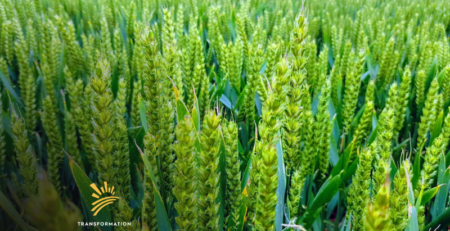How Do Agrivoltaics Support Clean Energy and Sustainable Agriculture?
Many people are in the dark on how agrivoltaics can offer better solutions to global energy needs. For example, many do not understand how this bio-mimicry solar power system helps farmers to produce sustainable vegetables and fruits year-round. In addition, it can even help increase their income when farming is done using agrivoltaics rather than by traditional means. Thus, understanding how agrivoltaic systems work could be the first step to implementing new technology that supports renewable energy and sustainable food production.
Furthermore, many people do not realize how agrivoltaics can also help farmers supply clean energy to remote locations while still using the same infrastructure. As a result, this technology could help improve the quality of life for those living in remote locations without access to clean energy or sustainable food production. One important aspect of the technology is how it uses solar power and how it can impact the environment.
What is Agrivoltaics?
Agrivoltaics, also called agro-solar, has been hailed as a solution to combat the need for sustainable energy in the world. As of right now, the technology has only been released in test units. However, it is expected that this harvesting system can be applied worldwide. The concept of agrivoltaics is to combine the concepts of solar power and greenhouses/agriculture in one system.
As a result, this creates an environment that provides for more natural means of food production. In addition, it also provides clean energy. This is because both systems work together to provide food production and energy generation solutions. Moreover, these systems can be utilized on smaller scales, which means that the solution can reach rural parts of the world where access to solar power is limited.
How Do Agrivoltaic Systems Work?
To understand how it works and what it can do for farmers and their fields, one must first know a bit about traditional farming practices to see where agrivoltaics differs from them. Future technology has the potential to assist in food production globally. In order to be viable, however, technologies must be simple and easily accessible.
Combining agrivoltaics with a solar-powered greenhouse system offers farmers a higher yield of fruits and vegetables. This is because vegetable and fruit farming is done using a sustainable energy source. In addition, it also increases the farmers’ income by up to 50%, which has been shown in studies done on agrivoltaics. Agrivoltaic systems raise ground-mounted solar arrays so that people, equipment, and animals may walk underneath them to cultivate crops and cattle. Peppers, kale, broccoli, swiss chard, celery, potatoes, winter wheat, clover, and other crops have all been grown under raised solar panels.
How Agrivoltaics Supports Clean Energy and Sustainable Agriculture
Agrivoltaics offers a better solution than traditional food production methods because it uses solar power. This also results in clean energy, which makes use of solar panels instead of polluting power plants. Here are a few ways that agrivoltaics supports clean energy and sustainable agriculture:
1. Efficient and long-lasting
Agnivoltaics is a system that uses solar panels to raise greenhouses. Farmers can use this technology to produce more food, which reduces the amount of polluting energy needed for food production. In addition, the system’s lifespan can be as long as 35 years. By raising greenhouses with solar panels, farmers have a way of getting clean energy from both their food production and their greenhouse systems at the same time.
2. Easier to use
Farmers can use their agrivoltaic systems with their current infrastructure. This allows them to keep the same system they work with every day. By doing this, farmers do not have to make any significant changes in their production methods. They can continue using existing equipment, which means that this technology will not require farmers or other people to move to new locations or start completely new farms.
3. Provides better nutrition.
The food grown using agrivoltaics has a much higher nutrient content than the traditional food. This is because it uses a system that combines natural sunlight and solar power while also providing hydroponics to help maximize the nutritional content of crops. In addition, microwave technology helps speed up growth so that the vegetables and fruits can become marketable faster than vegetables are grown using traditional methods.
4. Increased energy security
This is done by providing local residents with more renewable energy resources. As a result, they do not have to worry about their energy supply being controlled by corporate interests. This can also be expanded to include solar power to increase sustainable food production. Increased food supply means that there will be less food wasted, and overproduction of food can be reduced significantly. Thus, this technology offers a solution for both clean energy and sustainable agriculture needs. In addition, it also helps to support sustainable water usage and local economies.
5. Environmental Benefits
This type of technology is designed to support many environmental benefits, such as energy conservation, reduced fossil fuel usage, pollution generation, mitigation of global warming, and lower greenhouse gas emissions. It also works as a substitute for fossil fuels by using solar power to avoid or reduce pollution that would have been generated if coal had been used in power plants.
6. Promotes Fair and Sustainable Food Production
Agrivoltaic Systems offer a solution to sustainable food production. Since it uses solar panels and hydroponics in combination, this technology helps ensure that farming operations are more sustainable by promoting the growth of organic foods. The technology also raises agricultural yields by up to 50% making it a viable option for farmers who cannot afford chemical fertilizers or pesticides.




Comment (1)
This is a fantastic answer to the global crisis in clean energy availability and food security, especially as it relates to Africa. If I can, I’d like to connect with you and further develop this agrivoltaic system in Ethiopia. Since there is a great chance to improve this technology for clean energy access and sustainable agriculture, farmers’ incomes will rise as a result. good work !!